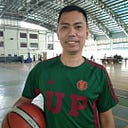The 1990 Luzon Earthquake
by Oliver Carlos
I enrolled advanced subjects in the summer term of 1990. One of the subjects I took was Humanities 1, which was similar to today’s CHED-prescribed GE course, Art Appreciation. We studied paintings, architectural designs, and other art forms. The highlight of the subject was the Ilocos fieldtrip, which had a side trip to Baguio City.

It was around late April when our class went to the far North for a 3-day tour. We went around Region 1 to analyze the designs of centuries-old Catholic churches. We also visited a handful of Marcos museums. We also saw the breath-taking sand dunes beside Fort Ilocandia, and the stunning beauty of Lake Paoay. We were billeted at a dormitory in the Don Mariano Marcos Memorial State University (DMMMSU) in La Union.
One memorable church for me was the Sta. Lucia church in Ilocos Sur. It’s the only one I saw with a cross-shaped floor plan. The other churches were just simple rectangles. I wrote a nice analysis about it, and my professor liked my work and included it as an excerpt or citation in his publication.
On our way home, we made a quick stop-over in Baguio City. I was able to stroll at Burnham Park and along Session Road to buy some pasalubong for my family. I brought home a walis tambo and some bottles of strawberry jam. For myself, I bought a native backpack and an ethnic belt. Both were made of rattan which looked like bamboo strips. They became part of my regular get up or fashion until I finished college. Ah, that Ilocos field trip was indeed sentimental.
Little did I know that 2.5 months after I’ve left my footprints in Ilocos and Baguio, disaster would strike. The strongest earthquake I have seen and felt in my lifetime (so far) happened on July 16, 1990. It was an intensity 7 quake near the epicenter, which I think was Nueva Ecija. I was in UPLB attending a Human Ecology class at the HFDS building. It was around past 4 P.M. when the ground swayed sideways several times for several seconds. Our professor instructed us to remain calm and then we evacuated to the street outside our one-story building. We also saw hundreds of students standing on the vacant lot at the back of the 3-storey PhySci building. Everybody looked worried, but thankful that they’re safe and the buildings didn’t collapse.
In the next weeks, the images on the television news reports were shocking. A school building in Nueva Ecija gave way and buried alive several students. In Baguio City, a high-rise 5-star hotel crumpled like a deck of cards. It took several days for rescue teams to dig through the rubble to rescue people. There were survivors, but sadly, several people perished. Meanwhile in Ilocos, I heard that the Sta. Lucia church was also badly damaged and needed major repair works. Once so grand, it became an awful sight.
An earthquake is a dreaded natural disaster. Compared to typhoons, earthquakes cannot be predicted or forecasted. They just happen at an instant without warning or sign. And so for some people, death can also be that sudden. This is a fact that is also taught in the Bible. We read in James 4:14 (NLT):
“How do you know what your life will be like tomorrow? Your life is like the morning fog — it’s here a little while, then it’s gone.”
Compared to eternity, our life is just a dot. We all have our appointed time. We do not know when and how we will be taken away, but for sure it will happen. We can be so well and alive today, but we can be gone tomorrow. So the best thing we can do is to prepare for eternity, while we are still alive. Like securing an insurance, we can be sure that we will go to heaven. We just have to let Jesus enter our hearts, and make him our personal Savior. This means turning away from sin, and accepting the new life God is offering us, a life that is surrendered to Jesus. 1 Corinthians 5:11–12 (MSG) says:
“God gave us eternal life; the life is in his Son. So, whoever has the Son, has life; whoever rejects the Son, rejects life.”
Let us make the wisest decision we can make, while there is still time.
